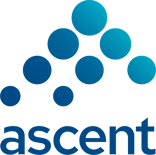Ascent Global Logistics’ heavy haul team, Ascent Specialized, was recently recognized by the Specialized Carriers and Rigging Association (SC&RA) as an industry leader. Our heavy haul team member, Travis Lewellyn, was selected as one of fifteen up-and-coming global leaders that were invited to attend the 2019 Leadership Forum. This event was held in conjunction with the Specialized Transportation Symposium in Houston, Texas.
After the event, our team conducted an interview with Travis to share Specialized transportation best practices and explain some of the key changes occurring within the industry.
Q1. What is the most significant challenge the heavy haul industry faces in 2019?
One of the biggest challenges for the heavy haul industry is the on-going driver shortage. One of the largest contributing factors to the driver shortage is finding skilled and qualified drivers. Couple this with factors such as harsh road conditions, tight delivery schedules and long hours on the road away from friends and family, working as a driver can be very stressful.
Q2. What was the most interesting key takeaway from the event?
The most interesting key takeaway from the event involved a case study about the transportation of heavy haul materials on roads that are not well maintained. A guest speaker from Latin America shared his experiences with the group explaining the process of an extraordinary move of a 130-foot wind mill blade that was shipped standing in an upright position. During the transportation process, he and his team manually performed bridge and engineering studies to ensure safe passage of the cargo through rocky terrain. Throughout Latin America, heavy haul companies must conduct safety studies themselves which is very difficult as their governments do not always provide accurate safety data.
In the United States, however, bridge and engineering studies for heavy haul and super load moves are performed by professionals contracted through the carrier or the state that the load will travel through. Fortunately, our government conducts regular safety tests that provide helpful data when route surveys are performed.
Q3. How will technology shape the heavy haul industry over the next five years?
Technology will continue to play an important role in the future of the heavy haul industry. Throughout the conference, technology was a very popular discussion topic. New software applications are just one of ways technology is rewriting manual industry processes.
For example, mobile applications are beginning to automate how routes are planned. Currently, a driver needs to determine which routes he or she is permitted to use by examining maps, which can be very time consuming. However, thanks to applications that provide GPS capabilities for permitted routes, drivers can perform this process electronically saving time while increasing safety and efficiency. This technology will be in the testing stages within the next five years.
Technology is also changing the way in which carriers obtain permits. For instance, app-based permit services are allowing truckers and carriers to easily order permits from smartphones. Many carriers order permits directly through state divisions of the Department of Transportation (DOT); however, an increasing number of carriers are choosing to utilize app-based permit services for convenience and speed.
Q4. What is the permitting process for heavy haul loads?
The permitting process for heavy haul loads is very detailed and accuracy is imperative. Shippers, brokers and carriers share shipment information to prepare documentation before submitting a permit application.
Common shipment details that must be known include, but are not limited to, the commodity description, dimensions, weight, make, model and serial number.
Please be aware that a permit request does not guarantee that a permit will be granted. Each state and local municipality has the right to accept or decline permit requests at their discretion.
Q5. How important is safety in heavy haul moves?
Safety is our top priority for all heavy haul moves. To ensure safety, drivers must:
- Supply their own Personal Protection Equipment.
- Have all necessary flags, signs and / or flashing lights on the truck and trailer when hauling permitted loads.
- Confirm a safe route has been mapped out to avoid low bridges and other possible hazards.
Additional heavy haul transportation safety best practices include:
- Wear proper Personal Protection Equipment (PPE) during the loading / unloading process.
- Using proper equipment to tarp and secure loads that are 12 feet tall or higher.
- Avoid routes that could pose a threat to potential cargo damage.
How Can I Learn More About Specialized Freight Solutions?
With so many variables to consider when handling over-dimensional, heavy and super loads, our Ascent Specialized team has the experience and technical expertise to help ensure loads are handled with safety and compliance.
If you would like to learn more about our heavy haul transportation solutions, click here to contact our Ascent Specialized team.
In addition, if you have not done so already, please click here to subscribe to our weekly newsletter, CLIFF NOTES so you can stay up-to-date on all top logistics new headlines.
